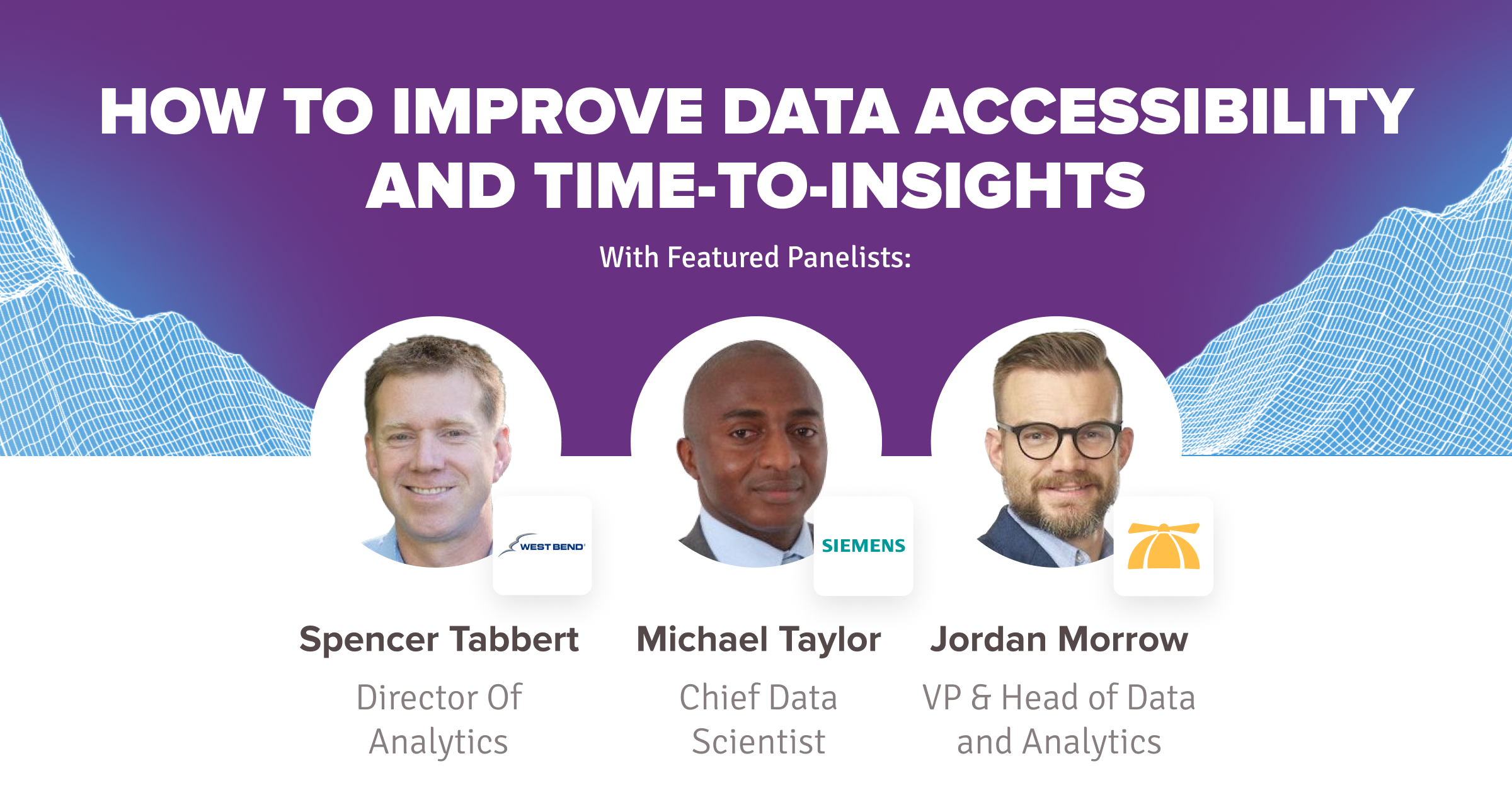
I recently held a panel discussion with leaders in data management to discuss ways to improve data accessibility across any organization. Our discussion centered around the idea that it’s time to move beyond descriptive and diagnostic insights — reviewing what happened and why — toward predictive and prescriptive insights — asking what will happen and what we are going to do about it.
The world of data management is on the right path to accommodate this shift, but there are still certain challenges we must all overcome. Panelists Jordan Morrow, vice president and head of data at BrainStorm, Inc., Spencer Tabbert, director of analytics at West Bend Mutual Insurance, and Michael Taylor, chief data scientist at Siemens Singapore, all shared valuable insights from their unique experiences.
Here are some of the most exciting takeaways from that discussion.
Data literacy is key
Morrow, also known as “The Godfather of Data Literacy” shared unique insights about promoting data literacy across any organization. He says that while not everyone needs to be a data scientist, everyone within an organization must feel confident utilizing data. Developing a data sharing culture is the only way that an organization can be truly data-driven.
There are a few key ways to promote data literacy within your teams:
- Curiosity: Encourage everyone to ask more questions and never take data at face value. It’s important to ask questions about everything from what the data means to how it’s visualized.
- Creativity: Morrow advises that anyone working with data should “Bring your personality to the data. Bring yourself to the data.” He believes that, to be most useful, data should tell a story. This helps people contextualize insights and take more effective action from those insights.
- Critical Thinking: Morrow advises anyone working with data to be a data cynic, not a data skeptic. He cautions everyone to question what they see, but remain confident that data can help find the answers your company is looking for.
Don’t start with technology
Any good data project should start with a question or a desired outcome — not a technology solution. Too often, today’s data scientists and data managers rely on the data and BI tools at hand to give them canned insights and pre-packaged reports. Instead, look to structure your technology stack in a way that answers questions and provides actionable insights that are unique to your business and its needs.
When choosing a technology vendor, stay away from one-size-fits-all solutions. Find a solution that allows you to be flexible, while also getting data into peoples hands early and often.
Taylor also cautioned business leaders to consider scalability. If your data management solutions can’t scale to answer different types of questions, it’s a quick road to nowhere.
Organizational structure is key
Another roadblock for many organizations actually lies in the team structure. Tabbert warns of some organizational alignment issues that are key inhibitors to efficiency and effectiveness. The biggest problem? Many organizations have one person who is responsible for “owning data.”
Tabbert believes data should be everyone’s business. He recommends that organizations create a “Center of Excellence” instead, shifting data expertise to a team of leaders who are tasked with disseminating information and best practices throughout the organization to empower the entire team — not running all data projects from start to finish. This is much more effective than keeping data in a silo or within the purview of just a few professionals.
Consider cross-functional teams
Cross-functional teams are also key to the success of data-driven organizations. For instance, aligning AI and BI teams to empower decision-making. A lot of times, data professionals, like data analysts or data scientists, don’t understand the business goals or objectives of a data project. Without context, these professionals end up reviewing data streams in a silo. With a better understanding of the big picture, they can be more creative and innovative about how to view and analyze data.
To fix this issue, Tabbert recommends organizations align business resources and IT resources together on teams. This creates more efficiencies because it provides a broader breadth and depth of knowledge coming together to tackle any issue. It also promotes more accountability within the organization — no more blaming IT for issues related to data management or technology stack decisions.
For more insights, check out the full discussion in our recorded webinar: How to Improve Data Accessibility and Time-to-Insights.
SHARE
Guide: How to Choose a Semantic Layer